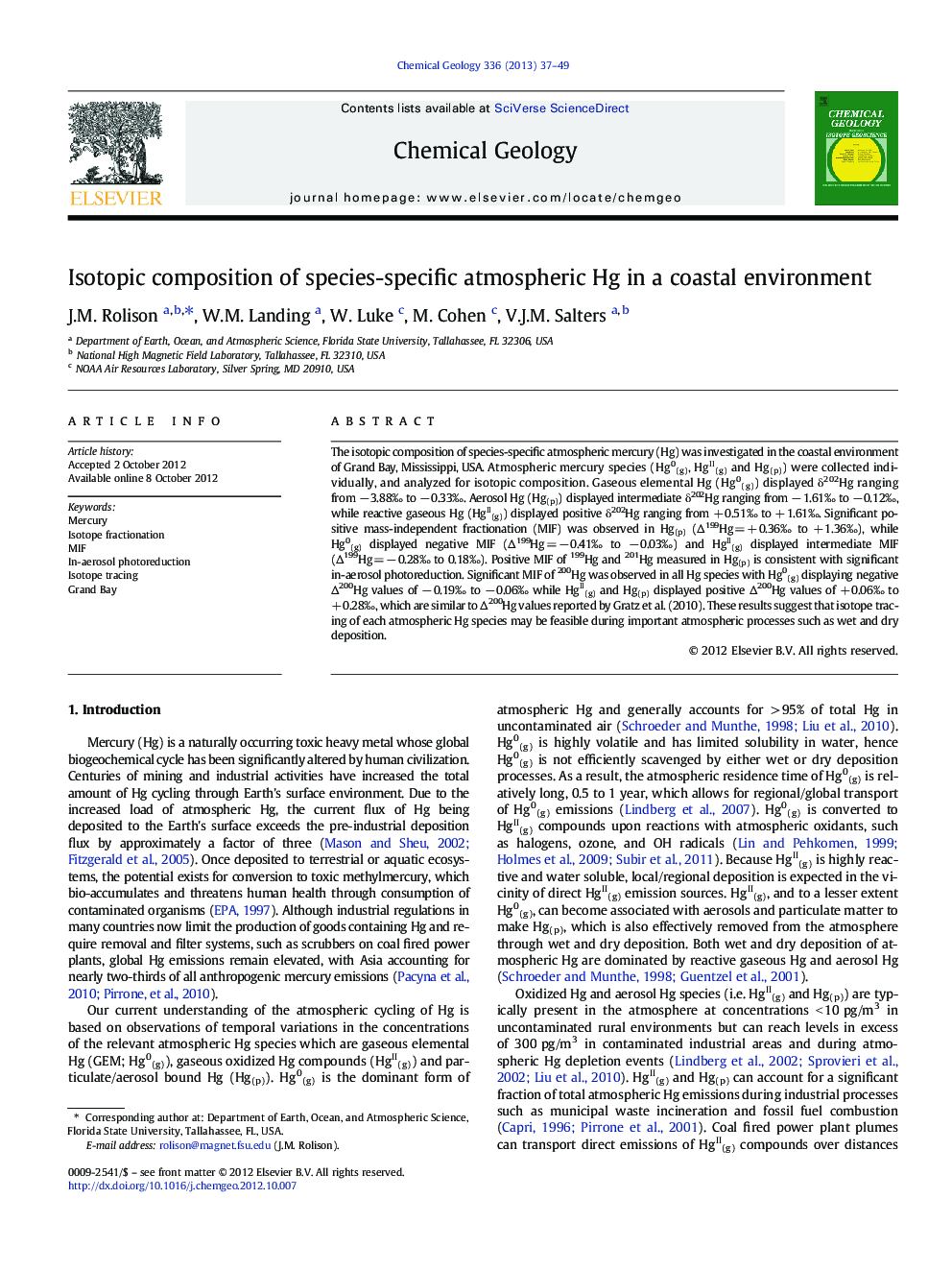| Article ID | Journal | Published Year | Pages | File Type |
|---|---|---|---|---|
| 4699155 | Chemical Geology | 2013 | 13 Pages |
The isotopic composition of species-specific atmospheric mercury (Hg) was investigated in the coastal environment of Grand Bay, Mississippi, USA. Atmospheric mercury species (Hg0(g), HgII(g) and Hg(p)) were collected individually, and analyzed for isotopic composition. Gaseous elemental Hg (Hg0(g)) displayed δ202Hg ranging from − 3.88‰ to − 0.33‰. Aerosol Hg (Hg(p)) displayed intermediate δ202Hg ranging from − 1.61‰ to − 0.12‰, while reactive gaseous Hg (HgII(g)) displayed positive δ202Hg ranging from + 0.51‰ to + 1.61‰. Significant positive mass-independent fractionation (MIF) was observed in Hg(p) (∆199Hg = + 0.36‰ to + 1.36‰), while Hg0(g) displayed negative MIF (∆199Hg = − 0.41‰ to − 0.03‰) and HgII(g) displayed intermediate MIF (∆199Hg = − 0.28‰ to 0.18‰). Positive MIF of 199Hg and 201Hg measured in Hg(p) is consistent with significant in-aerosol photoreduction. Significant MIF of 200Hg was observed in all Hg species with Hg0(g) displaying negative ∆200Hg values of − 0.19‰ to − 0.06‰ while HgII(g) and Hg(p) displayed positive ∆200Hg values of + 0.06‰ to + 0.28‰, which are similar to ∆200Hg values reported by Gratz et al. (2010). These results suggest that isotope tracing of each atmospheric Hg species may be feasible during important atmospheric processes such as wet and dry deposition.
► Concurrent collection of Hg0(g), HgII(g), and Hg(p) in a coastal environment. ► Distinct Hg isotope composition of each species. ► Positive mass independent fractionation in Hg(p) suggests in-aerosol photoreduction of HgII. ► Isotope tracing of atmospheric Hg should be feasible.
